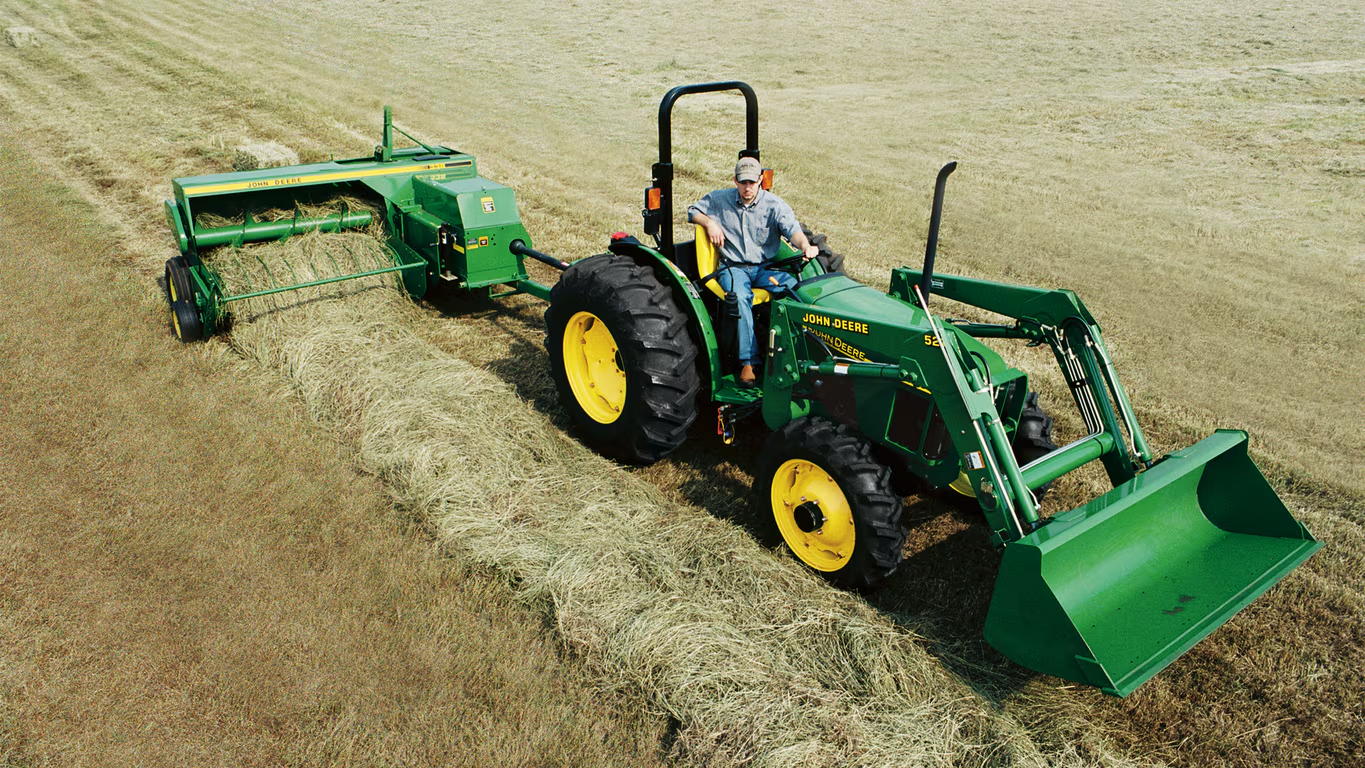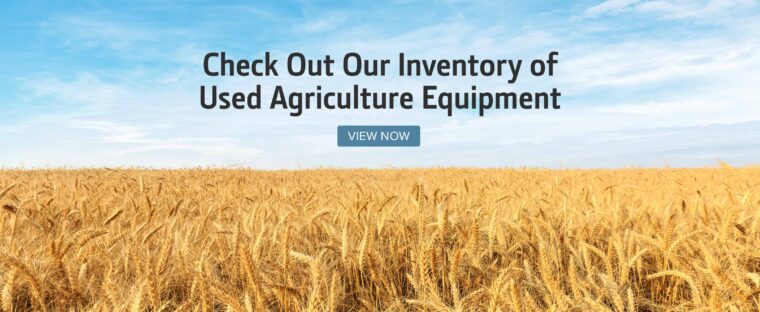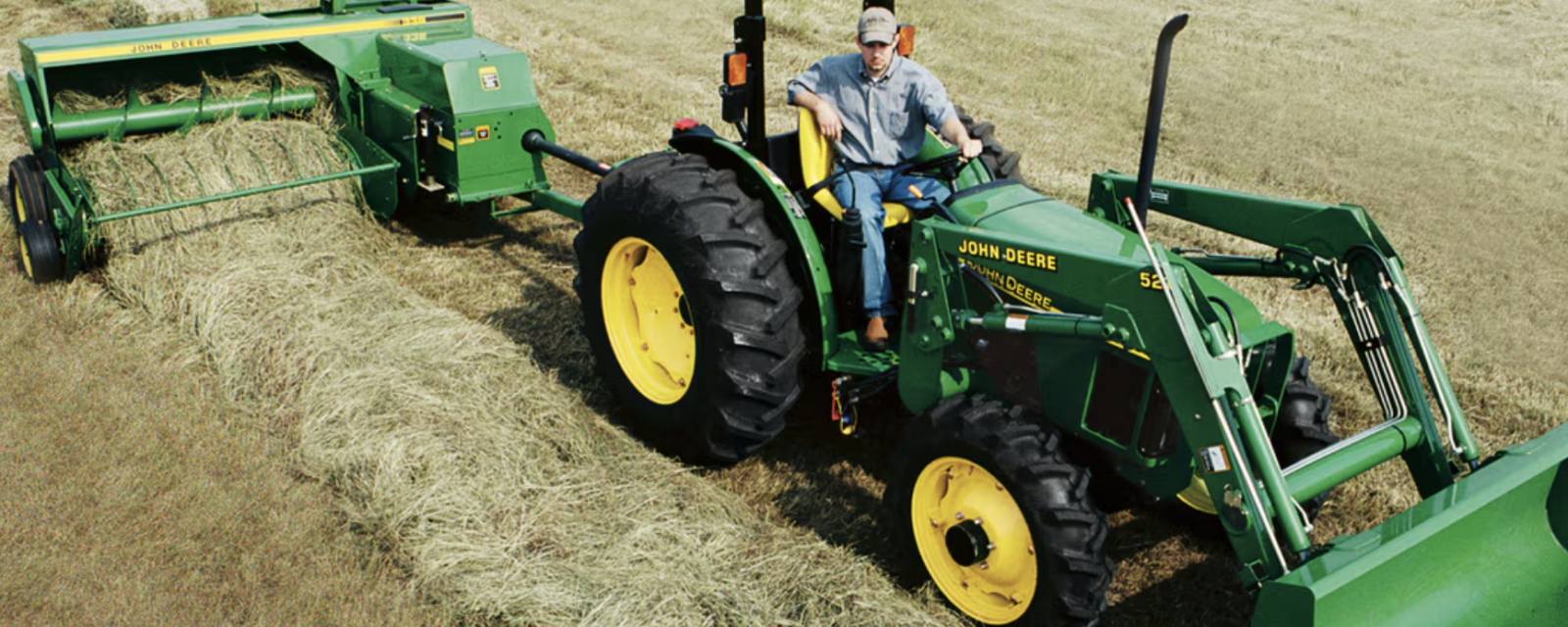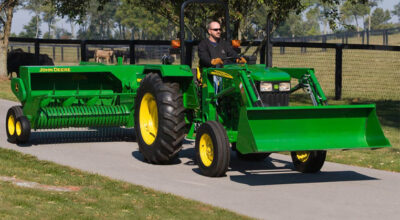They say you should make hay while the sun shines, and the most efficient way to do that is with a hay baler. Even small family farms harvesting a few hundred hay bales each year will greatly benefit from one of these machines, like the John Deere 338 or 348. But how do you know which will best suit your needs? Let’s grab our tool belts and look at what makes each of these hay balers unique.

What Is a John Deere 338 Small Square Baler?
The John Deere 338 Small Square Baler is tailored for medium-sized farming operations, balancing capacity and efficiency. It produces uniform 14 x 18-in (36 x 46-cm) bales, and its knotter system can use twine or wire.
With the 338, adjusting the knotter timing and the tension spring is simpler than ever. Best of all, there’s an optional, easy-to-use tension knob to account for different crop densities, ensuring a perfectly compressed bale every time.
Overall, the John Deere 338 is a versatile and practical choice for efficient baling needs.
What Is a John Deere 348 Small Square Baler?
The John Deere 348 Small Square Baler is a slight upgrade to the 338. The biggest differences are the plunger speed and weight. The 348 also produces uniform 14×18-in (36 x 46-cm) hay bales and has the option for an adjustable tension knob.
The 348’s plunger is capable of 93 strokes per minute, making it about 15% faster than the 338. Practically, this means the 348 is better suited to farms larger than those using the 338, but not so large that they would need a large baler, like the L331. In exchange for this increased plunger speed, the 348 is about 300 lbs heavier than the 338 and includes options for a work light.
John Deere 338 vs. 348: Key Features
As the 348 is a slight modification of the 338, the two machines differ only slightly in their key features.
Full-Width Feeding Pickup
Both machines offer a 74-in (188-cm) wide feeding pickup with 156 teeth.
Adjustable Hay Compressor
The adjustable hay compressor floats to ensure all teeth have the same operating height.
Deep-Flighted Auger Feeding
Each unit features a free-floating auger that maintains height with the incoming crops. The size of the augers increases the overall capacity and reduces leaf loss.
Accurate Knotters
Shaft-and-gear-driven knotters ensure dependable and accurate operation. The knotting system is designed for easy maintenance and disassembly.
Hydraulic Bale Tension Available
Available as an optional add-on, this feature uses hydraulic cylinders to control bale density instead of springs. An easy-to-use tension knob modifies the baler’s tension to adapt to different crop densities while exerting uniform pressure and increasing bale weight.
Uniform Bales
Each machine produces a uniform 14 x 18-in (36 x 46-cm) bale with adjustable length ranging from 12 to 50 in (30.5 to 127 cm).
Quiet, Dependable Operation
John Deere’s small balers put the compression charge on the downstroke, eliminating much of the noise and wear expected from similar baling devices.
John Deere 338 vs. 348: Key Specifications
The main difference between the 338 and 348 lies in the strokes per minute. However, it’s still important to see what each machine offers.
Minimum PTO
The power takeoff (PTO) for both machines is 35 hp (26 kW).
Pickup Width
All of John Deere’s small balers have a pickup width of 74-in.
Bale Size Height and Width
Small square balers produce uniform 14 x 18-in (36 x 46-cm) bales, perfectly sized for weight and stacking.
Bale Size Length
The 338 and 348’s bale length is adjustable, ranging from 12 to 50 inches (30.5 to 127 cm).
Adjustable Hydraulic Bale Density
Adjustable hydraulic bale density is an optional feature on both the 338 and 348.
Plunger – Strokes/Minute
The 338 produces 80 plunger strokes per minute, while the 348 makes 92 strokes per minute. Simply put, the 348 is about 15% faster and better suited to larger farms than the 338.
John Deere 338 vs. 348: Choose the Right Baler Now!
Both the John Deere 338 and 348 are excellent balers, but the final decision depends on your needs. The 338 is better suited for medium-sized farms, while the 348 can accommodate slightly larger agricultural operations. Whatever your need, you can rest easy knowing that both options will do the job while offering durability and ease of use.

To learn more about which baler is right for you, visit your local John Deere dealership.



